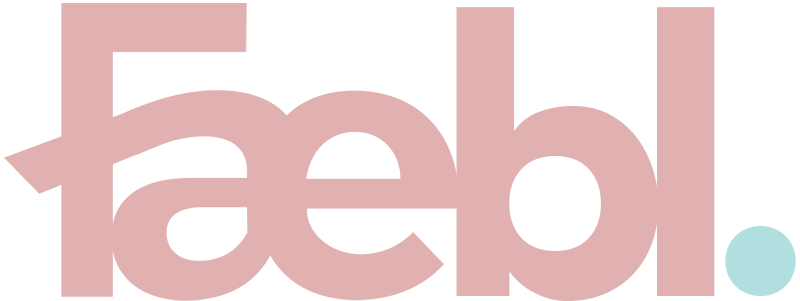In the competitive landscape of healthcare marketing, achieving a reduction in cost-per-admission is a formidable challenge, yet one that we successfully tackled for a Midwestern Intensive Outpatient Program (IOP). By employing a meticulous analysis of our marketing data, we pinpointed areas ripe for improvement. The key lay in optimizing targeting strategies, refining our messaging, and strategically reallocating resources. This calculated approach not only enhanced our return on investment but also elevated conversion rates. What were the specific techniques we used, and how did they translate into such impactful results? Let’s explore the pivotal steps that shaped this transformation.
Understanding Cost-Per-Admission
Understanding cost-per-admission involves analyzing the financial efficiency of marketing efforts in driving new patients to a Midwestern Intensive Outpatient Program (IOP). This metric is pivotal in determining the return on investment (ROI) of various promotional activities. Calculating ROI necessitates a thorough understanding of the costs associated with each marketing channel, including digital campaigns and traditional media. By meticulously tracking expenditures and conversions, an IOP can ascertain which strategies yield the highest patient acquisition rates relative to their cost. Setting benchmarks is an essential component of this analytical process.
Benchmarks serve as reference points, allowing the program to measure current performance against industry standards or past performance data. By establishing clear, quantifiable targets, the IOP can strategically allocate resources towards the most effective channels and campaigns. This approach assures that marketing efforts are not only cost-effective but also aligned with the overarching goals of enhancing patient intake. In essence, understanding cost-per-admission in a Midwestern IOP context requires a strategic blend of financial analysis and goal setting, focusing on calculating ROI and setting precise benchmarks to optimize marketing efforts.
Identifying Inefficiencies
After establishing a firm grasp on cost-per-admission, the next logical step is identifying inefficiencies within the marketing strategy of a Midwestern IOP. This pivotal phase involves a meticulous approach, beginning with analyzing data from past campaigns. By diving into performance metrics, one can uncover patterns that may signal inefficiencies, such as examining click-through rates (CTR) and conversion rates across different channels to highlight underperforming platforms. Identifying trends is another fundamental aspect of this process.
Trends can reveal seasonal fluctuations in admission inquiries or shifts in patient demographics, which can impact the effectiveness of marketing efforts. By recognizing these patterns, it becomes possible to adjust budget allocations more strategically, ensuring funds are directed towards high-performing avenues. Moreover, an in-depth analysis of the audience engagement metrics can provide insights into the resonance of messaging and creative assets. If certain campaigns consistently fail to engage, this could indicate a misalignment with the target audience’s preferences.
Optimizing Targeting Strategies
Refining targeting strategies is crucial for reducing cost-per-admission and maximizing the effectiveness of digital marketing efforts in a Midwestern IOP. One critical approach is audience segmentation, which allows marketers to divide the target market into specific groups based on demographics, behaviors, and needs. By tailoring messages to these segments, campaigns can become more relevant, leading to higher engagement and conversions. Campaign optimization plays a key role in refining these strategies. This involves continuously evaluating ad performance to identify successful elements and areas requiring adjustment.
By leveraging insights from performance data, marketers can refine their approaches to enhance effectiveness and reduce cost-per-admission. Keyword selection is another pivotal component. Identifying and utilizing the appropriate keywords ensures that ads reach the intended audience during relevant searches. This targeted approach increases the likelihood of attracting potential clients actively seeking services offered by the IOP, ultimately improving the efficiency and impact of marketing efforts.
Leveraging Data Analytics
Harnessing the power of data analytics is vital for reducing cost-per-admission in digital marketing campaigns for a Midwestern IOP. By systematically leveraging data analysis, marketing teams can identify patterns and trends that reveal which strategies yield the highest return on investment. This analytical approach allows for the optimization of campaign elements, such as ad copy, targeted parameters, and budget allocation, ensuring that each dollar spent contributes to the desired outcome. Strategic performance tracking is pivotal in this scenario.
By continuously monitoring key performance indicators (KPIs), such as click-through rates, conversion rates, and customer acquisition costs, marketers can make informed decisions. Advanced tools and platforms provide real-time insights, enabling prompt campaign adjustments to enhance efficiency. This dynamic process guarantees that resources are allocated effectively, focusing on channels and tactics that demonstrate the highest performance. Furthermore, data analytics facilitates the identification of underperforming segments, allowing for targeted refinement. Ultimately, this integration strengthens the impact and efficacy of marketing initiatives. For more detailed information on technical SEO, you may refer to this comprehensive resource on technical SEO metrics.

Final Thoughts
The reduction in cost-per-admission for the Midwestern Intensive Outpatient Program exemplifies the strategic application of data-driven methodologies. By identifying inefficiencies and optimizing targeting strategies, the organization effectively refined its marketing approach. The use of data analytics facilitated informed decision-making, leading to enhanced resource allocation and improved messaging. This analytical and strategic focus not only increased return on investment and conversion rates but also established a sustainable model for cost-effective admissions, demonstrating the critical role of continuous improvement in marketing efficacy.
If you operate a substance use treatment facility and you’re ready to grow, you’re in the right place. At Faebl Studios, we partner with detox, rehab, IOP, and sober living programs to accelerate admissions, streamline operations, and drive predictable ROI. Whether you’re an early-stage facility or scaling to capacity, our team becomes an extension of yours offering full-spectrum SEO, advertising, consulting, and more. Get in touch to schedule a free assessment and see how we can help you grow smarter and faster.
Frequently Asked Questions
What Is the Impact of Ad Scheduling on Cost-Per-Admission?
Ad scheduling greatly impacts cost-per-admission by optimizing ad targeting to reach audiences during peak engagement times. By strategically analyzing conversion tracking data, advertisers can identify the most effective time slots, thereby reducing wasteful ad spend. This precision in scheduling enhances the likelihood of conversions, ultimately lowering the cost-per-admission. A well-implemented ad scheduling strategy, aligned with thorough conversion tracking, can therefore significantly enhance the efficiency and cost-effectiveness of advertising campaigns.
How Can Creative Ad Content Affect Cost-Per-Admission?
Creative ad content markedly influences cost-per-admission by employing visual storytelling and emotional appeal to engage potential customers effectively. Visual storytelling captures attention and conveys complex messages succinctly, enhancing user engagement. Emotional appeal fosters connection and trust, prompting higher conversion rates. Strategically crafted content aligns with audience interests and values, improving ad performance. Consequently, a well-executed creative strategy can reduce cost-per-admission by optimizing user interaction and conversion likelihood.
What Role Does Landing Page Optimization Play in Reducing Cost-Per-Admission?
Landing page optimization greatly impacts reducing cost-per-admission by improving conversion rates. Strategic adjustments, such as A/B testing various elements like headlines, calls-to-action, and layouts, help identify the most effective combinations that encourage user engagement and conversions. Consider exploring our web design services to enhance landing page effectiveness.
How Does Competitor Analysis Contribute to Lowering Cost-Per-Admission?
Competitor analysis greatly contributes to lowering cost-per-admission by providing insights into market research and target audience strategies. By analyzing competitors’ successful tactics and identifying gaps in their approach, businesses can refine their marketing strategies to better align with consumer preferences. This strategic adjustment not only enhances targeting precision but also optimizes advertising spend, effectively reducing cost-per-admission while maximizing ROI. Therefore, competitor analysis is a critical component of an efficient digital marketing strategy.
Can Budget Adjustments Influence Cost-Per-Admission Outcomes?
Budget adjustments can greatly influence cost-per-admission outcomes by optimizing pricing strategies and refining demographic targeting. Strategic allocation of resources guarantees that funds are directed towards high-performing segments, while campaign monitoring and ad performance tracking provide insights for continual improvement.



